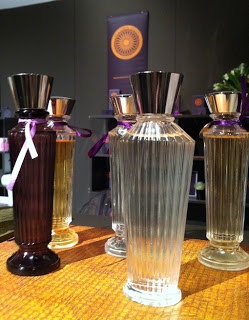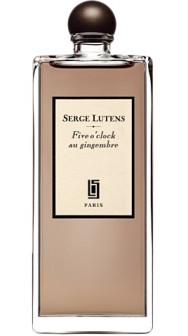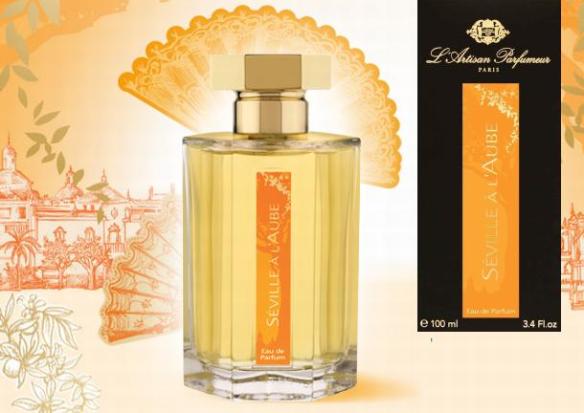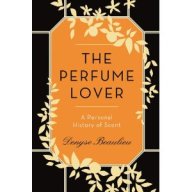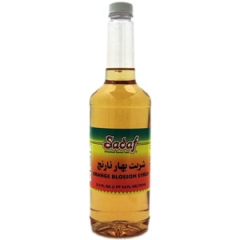The essence of Latin America and “suggestive sensuality.” That was the goal and inspiration for Montabaco from Ormonde Jayne, the London luxury niche perfume house. Montabaco is one of the new Four Corners of the Earth collection which was released in late 2012 and which pays homage to the different parts of the world that have inspired Ormonde Jayne’s founder, Linda Pilkington. The collection is the result of collaboration between Ms. Pilkington and the perfumer, Geza Schoen, and consists of four fragrances: Tsarina, Qi, Montabaco and Nawab of Oudh. (I have samples of all four fragrances, provided courtesy of Ormonde Jayne, and am working my way through the collection. I have already reviewed Nawab of Oudh and Tsarina.)
 The description of the fragrance from Ormonde Jayne definitely intrigued me and led me to imagine a profoundly rich, sensuous and lush experience:
The description of the fragrance from Ormonde Jayne definitely intrigued me and led me to imagine a profoundly rich, sensuous and lush experience:
Montabaco is a perfume to capture the essence of Latin America: leather, suede, wood and tobacco leaf repeated over and over again creating a suggestive sensuality and Latino temperament. It sits above the rich floral presence of magnolia, jasmine and rose. It is all unashamedly seductive yet profoundly simpatico.
The perfume’s notes certainly added to my anticipation:
top: air note, orange absolute, bergamot, juniper, clary sage, cardamom. heart: magnolia, hedione, rose, violet, tea notes. base: tobacco leaf, iso e, suede, sandalwood, moss, tonka, ambergris.
Unfortunately, I struggled with Montabaco. Profoundly. It opens on my skin with a sharp burst of antiseptic alcohol — camphorous, mentholated, highly peppered, sharp, and pungently acrid. I was so astounded that I gave my arm another two sprays, thinking perhaps there was congestion in the nozzle or something that had turned the notes “off” in some way. The fragrance seemed so incredibly far from the notes and from what I had expected. But, no. It was the same thing. Intensely alcoholic, mentholated and antiseptic. There was such a resemblance to certain types of oud that have an undertone of medicinal, rubbery pink band-aids that I actually checked the sample twice to see if I had accidentally tried something else. Then I double-checked the notes to see if agarwood or oud was listed. I was so confused that I thought maybe over-application (4 sprays) was to blame, so I applied a far lesser amount (2 sprays) to the other arm and waited to see if the difference in amount would yield different results.
It did not. Though the strength of the perfume varied due to the amount per arm, the core essence of Montabaco remained the same for a vast number of hours. It was persistent, unchanging, and quite exhausting. As time progressed, about six hours to be precise, other notes had a minor chance to compete — but not by much. Nothing could really undercut the barrage of the mentholated, camphorous, peppered, rubbery, almost metallic, medicinal, oud-like note. Still, they gave it a valiant effort.
From the very first opening seconds, there was a strong undertone of tobacco but, here, it was not the sweet, dried tobacco leaves nor the more fruited sort of pipe tobacco. Instead, it was more like pungently dry tobacco in an unlit cigar. There were also hints of other things: citrus; herbaceous clary sage with its lavender underpinnings; a vaguely leathered nuance; and the merest suggestion of velvety, creamy, rich magnolia sweetness. After about five minutes, the impression of rubbing alcohol disappears but the bitter, medicinal, highly peppered, metallic accord remains dominant. Slowly, quiet notes of suede, cardamom, violet and pungent oakmoss join the mélange, but they too are mere whispers in the night.
There is simply no way for anything to compete with that overwhelming, overpowering main note. It truly feels like the sort of oud blast that one finds in some Montale fragrances — so much so that I poured over the perfumes notes in the press release three times just to check if agarwood was mentioned. It is not. But, damn, it feels as though I’m wearing a particularly strident, acrid Montale Aoud.
Time does not necessarily ameliorate the situation. By the second hour, the mentholated camphor wood has another rival: cigars. And this time, it’s a lit cigar. The arm which has a lot of Montabaco on it reeks of cigar smoke; the one which has much less of the perfume smells, in part, like an ashtray. The cigar smoke and ashtray notes become much less noticeable after an hour, returning back to a very dry, unlit tobacco note — but it was still an hour too long for me, particularly given its combination with the medicinal elements. Something in my body chemistry clearly does not respond well to Montabaco, though I’ve rarely had this situation with other tobacco fragrances. Hell, I own Tom Ford‘s potent Tobacco Vanille and Serge Lutens‘ Chergui but those manifest themselves as a very different sort of tobacco. Neither of them ever made me feel as though I were sitting in a closed-in cigar bar’s smoking room.
Four hours in, the stridently camphorated, peppered wood note finally quietens down a bit in intensity. It’s still powerful and the main part of Montabaco, but other elements now have the chance to breathe a little. There is some lovely citrus and bergamot, along with orange, suede and the lavender-nuanced clary sage; and they all sit atop a subtle, sweetly fragranced base of magnolia with the smallest hints of rose and sandalwood. The magnolia adds a breath of much-needed sweetness to the fragrance, but it is too little, too late.
By the sixth hour, the basenotes start to appear — at least on the arm where I didn’t apply a lot of the fragrance. There is sweet tonka, clary sage, orange, bergamot and some sort of amorphous “floral” note. In contrast, the other arm is still reeking predominantly of peppered, smoky woods, though the camphor element has now started to wane. And it stays that way for another few hours until it, too, finally turns into some sheer, minor softness with tonka, bergamot and vague florals.
All in all, Montabaco lasted between over 7.5 and 8 hours when 2 sprays were used, and approximately 10.5 hours when about 4 sprays were used. In the former instance, the sillage was good and the perfume could be detected from a small distance away for the first two hours, thereafter becoming somewhat softer. It became close to the skin around 4.5 hours in. On the arm where I applied a lot, however, the sillage remained quite forceful for a number of hours, finally becoming close to the skin about 7 hours later where it remained for an additional length of time. This is a strong and very powerful perfume if you use more than 2 sprays!
I tried to see if others had an experience similar to mine with Montabaco, but there aren’t a lot of reviews out there. One in-depth assessment came from The Candy Perfume Boy who was similarly disappointed in the fragrance, though his experience seems very far from my own. A part of his review reads as follows:
I find it to be somewhat of a disappointment. I wanted something rich and oozing with latin spirit, instead Montabaco feels decidedly spirit-less.
The main attraction in Montabaco is the mixture of rich, heavy notes such as tobacco, coffee, vanilla and woods with four or five gallons of Iso E Super. Now the addition of Iso E is no surprise as the Ormonde Jayne collection relies quite heavily on the stuff and perfumer Geza Schoen uses it in isolation for his Escentric Molecules line. The problem is that where the ingredient usually adds silkyness and lift, in Montabaco it seems way too omnipresent, almost as if all of the other notes are tripping over it just to get some attention.
Montabaco plays one tune and it plays it consistently for a very long time. It’s just a shame that this particular tune finds it difficult to stir any emotions. […]
It doesn’t sound as though he experienced any antiseptic medicine or peppery camphor. On the other hand, he seems to have smelled quite a bit of coffee which I didn’t, unless he’s referring to Montabaco’s pungent bitterness.
Yet his reference to the “gallons” of ISO E Super led me to wonder: was that the reason for the extremely sharp, antiseptic, rubbing alcohol feel? I’m not an expert on ISO E Super, though I’ve certainly smelled a number of perfumes that have contained it. Jacques Polge of Chanel is well-known to love the aromachemical, using large amounts to add a velvety feel and to accentuate floral notes, but no Chanel that I’ve ever encountered shared Montabaco’s painful characteristic. Jean-Claude Ellena uses it too, but I can’t recall any Hermès fragrance that smells so acrid and metallic. A brief Google search showed that Montabaco’s perfumer, Geza Schoen, is apparently a huge fan of ISO E. However, he’s used it before in other Ormonde Jayne fragrances — and I never experienced an unpleasant, synthetic note that reminded me of hospital antiseptics. Whatever the nature or impact of ISO E Super, to me, Montabaco translates as a synthetically medicinal oud/agarwood perfume. Not the beautiful, gorgeous agarwood that was in Ormonde Jayne’s spectacular Nawab of Oudh, either, alas.
Perhaps I’m simply not masculine enough or strong enough to appreciate Montabaco. The perfume has only one comment in its Fragrantica listing and that one is a rave:
I tried all of Four Corners and must admit that Montabaco was the one I truly and deeply fell for. (unlike most bloggers who praise Tsarina which on my skin smelled dull and somehow flat). Montabacco on the other hand is a completely different story: it’s strong, it’s powerfull and it demands atention. Definitely not a scent for faint hearted and weak women as it has a subtle yet dominant masculine note. This is one of the very few fragrances that I can actually distinguish separate notes and according to my nose the strongest is tobacco, leather and sandalwwod accompanied by duo of jasmine and rose. I can also smell clary sage which my brain classifies as a balmy accent.
Judging by what appeared on my skin, I don’t think there is anything “subtle” about Montabaco’s “dominant masculine note.” This is a scent that I think fans of Montale’s more… er… potent Aoud creations might appreciate, but I’m not sure it is for everyone. It certainly isn’t for me.
Disclosure: My sample of Montabaco was provided courtesy of Ormonde Jayne. As Always, that did not impact this review. My primary commitment is, and always will be, to be as honest as possible for my readers.
DETAILS:
Price & Availability: Montabaco is an Eau de Parfum which comes only in a large 100 ml/3.4 oz size and which costs £260.00 or, with today’s exchange rate, approximately $394. Neither Montabaco nor any of other Four Corner Collection are currently listed on the Ormonde Jayne website, but you can find all of them in the Ormonde Jayne stores, as well as at Harrods. Unfortunately, Harrods’ website says that this perfume is not available for export. Ormonde Jayne’s two London boutiques are at Old Bond Street and Sloane Square with the precise addresses listed on the website here. As for samples, none of the perfume decant sites in the US currently offer any of the Four Corners of the Earth collection.


